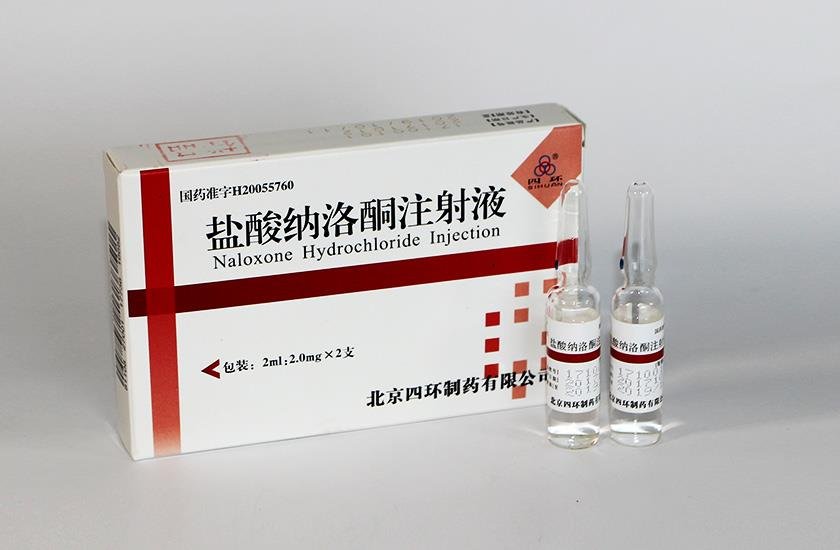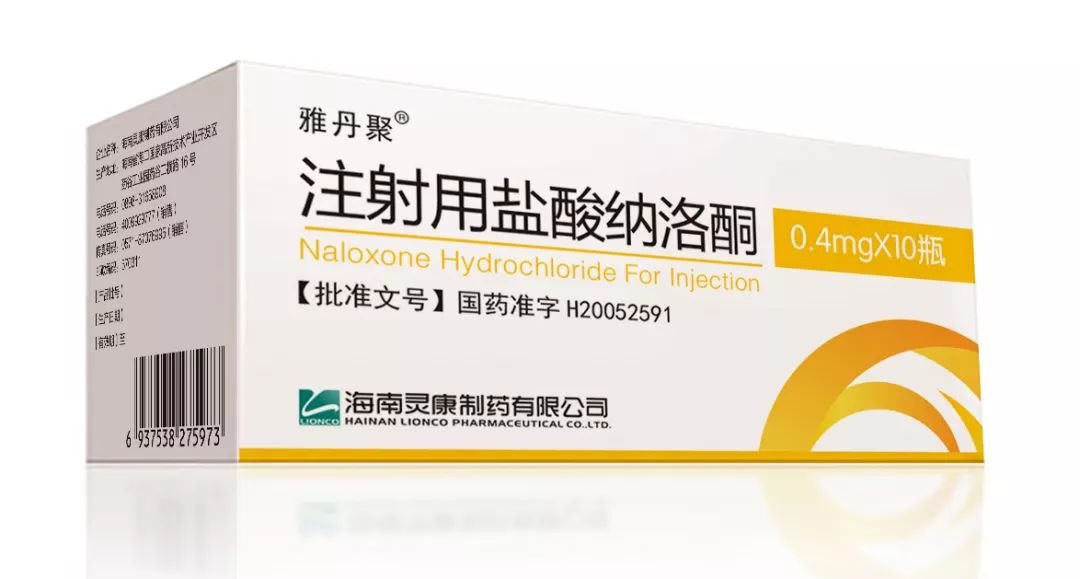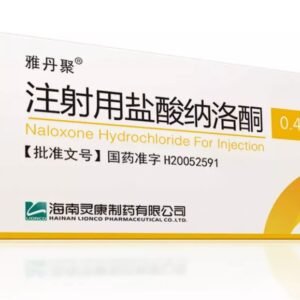Naloxone Hydrochloride For Injection.
Effects and efficacy: Naloxone is used to treat opioid and other narcotic analgesics (such as pethidine, alphaprodine, methadone, fentanyl, dihydroetorphine, etonizone, etc.) poisoning, sedative hypnotic and acute alcohol poisoning, diagnosis of opioid and other narcotic analgesics dependence, and for morphine-based combined anesthesia after surgery to relieve respiratory depression and awaken. Usage and dosage: For opioid overdose or poisoning, adults can be injected intravenously with 0.4~2mg, or 4mg can be sprayed into the nose. If necessary, it can be repeated after 2~3min. If the total dosage has reached 10mg and still has no effect, it should be considered that the patient has not used opioids. If the patient is suspected to be addicted, the dosage should be reduced to 0.1mg~0.2mg to avoid stimulating withdrawal syndrome. Children can be injected intravenously with 10μg/kg, and 100μg/kg can be used if necessary. For postoperative respiratory depression, 1.5~3.0μg/kg can be injected intravenously, and repeated administration should be at least 2min apart. For differential diagnosis, 0.4 mg of this product can be injected intramuscularly. If there is no reaction after 20 to 30 minutes, 0.4 mg can be given again. No reaction can be considered as non-addicted, but negative reaction cannot exclude opioid addicts. Rescue severe alcohol poisoning 0.8 mg to 1.2 mg, repeat the administration of 0.4 mg to 0.8 mg after 1 hour. Shock caused by various reasons under conventional treatment, intravenous injection of 0.4 mg to 1.2 mg of this product, blood pressure can be seen to rise in a few minutes and maintained for more than 45 minutes. Prevention and treatment of hypotension caused by anesthesia is especially effective for patients with cerebral arteriosclerosis, the usage is the same as above. Hypotension caused by clonidine can be seen by intravenous injection of 2 mg of this product, and blood pressure can be seen to rise. Acute alcohol poisoning, severe intravenous injection of 0.8 to 1.2 mg, moderate 0.4 to 0.8 mg, an average of 20 to 40 minutes to wake up. Barbiturates, chlorpromazine, benzodiazepines, antipsychotics and anti-epileptic drugs poisoning, intravenous or intramuscular injection of 0.4 to 1.2 mg, are all effective. In short, it is effective for respiratory depression caused by natural and synthetic anesthetic analgesics such as morphine and pethidine. Cardiopulmonary resuscitation is first intravenously injected at 0.02 mg/kg, and then maintained by dripping at 0.02 mg/(kg·h). For pulmonary cardioencephalopathy, 0.8 mg of this product is added to 40 ml of 5% glucose injection and intravenously injected over 3 minutes. If the patient is still unconscious after 6 medications, the drug should be withdrawn. Intravenous injection of 0.8~1.2 mg of this product for cerebral ischemia, stroke, and cerebral thrombosis can improve the state of brain hypoxia. For neonatal asphyxia, this product is 0.03 mg/kg, subcutaneously, intramuscularly or intravenously injected, and 100 ml of 5% glucose can also be added for intravenous drip. Intractable hiccups are relieved immediately by intramuscular injection of 0.4 mg of this product. For anesthesia awakening, this product is injected intravenously at 0.4~0.8 mg (8~10 μg/kg for children), and it takes effect in 1~3 minutes, and takes effect in 5~10 minutes by intramuscular injection. In case of acute respiratory failure, 0.4~0.5mg of this product is injected intravenously once every 1~2 hours. After stabilization, 0.8~2.0mg of this product is added to 500ml of infusion solution and slowly dripped once a day. Ventricular tachycardia, ventricular fibrillation and pulmonary edema caused by hypertension, and patients with heart failure should use it with caution or not. In case of carbon monoxide poisoning, under routine treatment, 0.4mg is injected intramuscularly for mild cases; 0.8mg is injected intravenously for moderate cases and added to 40ml of 50% glucose injection solution, which can be repeated every 2 hours; 0.8mg is injected intravenously for severe cases first, and then 1.6mg is added to 500ml of infusion solution and dripped. For pulmonary edema (including high altitude pulmonary edema), 0.8mg of this product is added to 10ml of 10% glucose injection solution and injected intravenously (5min), and then used again after 1 hour. For the treatment of bronchitis and heart failure, 0.0~0.02mg/kg of this product is injected intravenously, 1~2 times/day, and 2~4d is a course of treatment. Early use has better efficacy. Under the routine treatment of heatstroke, add 1.2mg of this product to 500ml of infusion and drip it. It has a strong awakening effect and no adverse reactions.
Adverse reactions:
Common nausea and vomiting. Some adverse reactions are related to opioid withdrawal. Hypotension, hypertension, arrhythmia and pulmonary edema may occur after surgery. Epilepsy rarely occurs.
Drug contraindications:
Allergic to this product is prohibited. Use with caution during pregnancy. Use with caution in patients with liver and kidney dysfunction. Use with caution during lactation.
Share:
Products
Our offers
Health Classification
Let us work together to protect precious health































